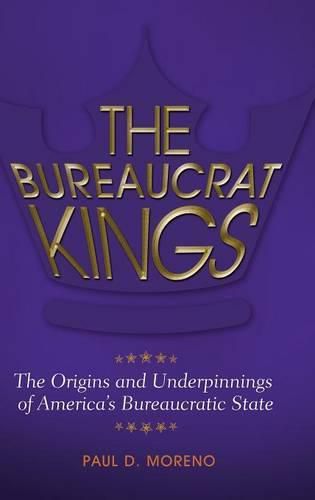Readings Newsletter
Become a Readings Member to make your shopping experience even easier.
Sign in or sign up for free!
You’re not far away from qualifying for FREE standard shipping within Australia
You’ve qualified for FREE standard shipping within Australia
The cart is loading…






Provocative in nature, this work looks critically at the bureaucratic infrastructure behind the U.S. federal government, from its origins as a self-governing republic in the 18th century to its modern presence as a centralized institution.
This fascinating critique analyzes the inner workings of the American government, suggesting that our federal system works not as a byproduct of the U.S. Constitution but rather as the result of liberal and progressive politics. Distinguished academic and political analyst Paul D. Moreno asserts that errant political movements have found loopholes in the U.S. Constitution, allowing for federal bureaucracy-a state he feels is a misinterpretation of America’s founding dogma. He contends that constitutionalism and bureaucracy are innately incompatible… with the former suffering to accommodate the latter.
According to Moreno, the leadership of the United States strayed from the democratic principles of the early founders and grew to what it is today-a myriad of bureaucratic red tape couched in unreasonable policies. A straightforward, chronological narrative explains how non-elected bureaucrats became powerful political mavens in America. Each chapter covers several decades and features events spanning from the early history of the United States through coverage of the Affordable Care Act (Obamacare) of 2010.
Suggests a number of improvements in the way our government runs based on the basic principles of good government
Explains the sources of bureaucratic government-how we went from a limited, constitutional government to a sovereign state
Discusses the economic, religious, and legal background of the growth of bureaucratic government
Shows how the original Constitution contained the spread of bureaucracy for more than a century
Reveals how the nineteenth-century party system avoided administrative excesses
$9.00 standard shipping within Australia
FREE standard shipping within Australia for orders over $100.00
Express & International shipping calculated at checkout
Provocative in nature, this work looks critically at the bureaucratic infrastructure behind the U.S. federal government, from its origins as a self-governing republic in the 18th century to its modern presence as a centralized institution.
This fascinating critique analyzes the inner workings of the American government, suggesting that our federal system works not as a byproduct of the U.S. Constitution but rather as the result of liberal and progressive politics. Distinguished academic and political analyst Paul D. Moreno asserts that errant political movements have found loopholes in the U.S. Constitution, allowing for federal bureaucracy-a state he feels is a misinterpretation of America’s founding dogma. He contends that constitutionalism and bureaucracy are innately incompatible… with the former suffering to accommodate the latter.
According to Moreno, the leadership of the United States strayed from the democratic principles of the early founders and grew to what it is today-a myriad of bureaucratic red tape couched in unreasonable policies. A straightforward, chronological narrative explains how non-elected bureaucrats became powerful political mavens in America. Each chapter covers several decades and features events spanning from the early history of the United States through coverage of the Affordable Care Act (Obamacare) of 2010.
Suggests a number of improvements in the way our government runs based on the basic principles of good government
Explains the sources of bureaucratic government-how we went from a limited, constitutional government to a sovereign state
Discusses the economic, religious, and legal background of the growth of bureaucratic government
Shows how the original Constitution contained the spread of bureaucracy for more than a century
Reveals how the nineteenth-century party system avoided administrative excesses